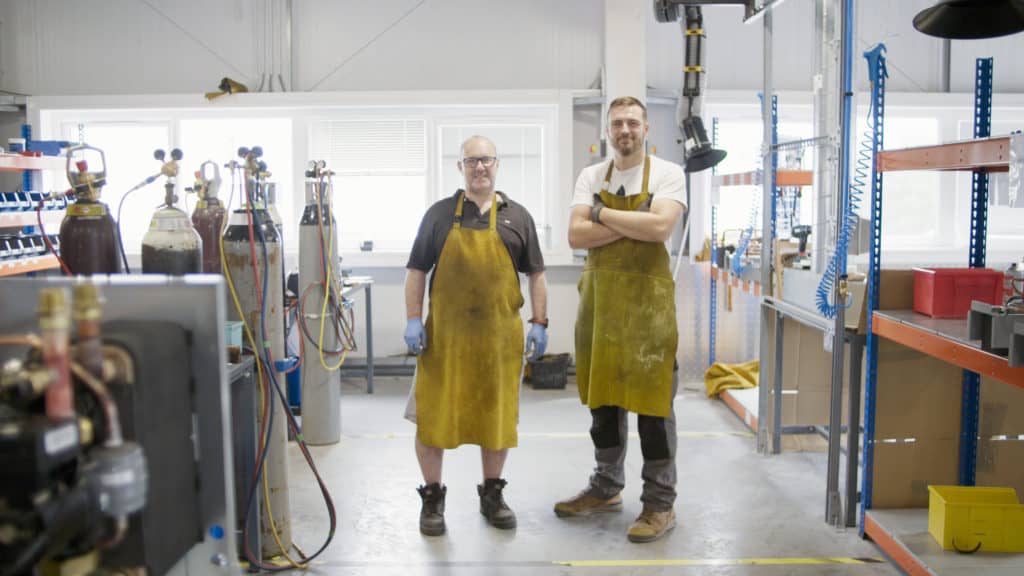Domestic heating is a huge source of UK carbon emissions. Meanwhile, fuel poverty affects at least 3 million UK households. Dramatic action is needed to protect the planet and deliver clean, affordable and reliable heating for all.
The UK government has said that gas and oil boilers will be banned in new homes by 2025, and that 600,000 heat pumps – a more sustainable alternative – will be installed by the year 2028. But new products, business models, partnerships and training initiatives are needed to make this ambition a reality, and make sure the benefits reach right across society.
Kensa Group is innovating to meet the challenge. The company has two decades’ experience in designing, manufacturing and installing ground source heat pumps. Ground source heat pumps extract sustainable heat from ground and water sources via ground arrays: loops of submerged pipes filled with a heat transfer fluid. The liquid absorbs heat at around 10ᵒC, which is then upgraded to 50-65ᵒC by the heat pump and used for heating and hot water in a home.
Two of Kensa’s recent innovations could make ground source heat pumps an attractive option in huge numbers of homes.
The first is shared ground loops, which enable more than one heat pump to be connected to a ground array, usually a borehole for multiple-occupancy dwellings. In practice, an array of boreholes will be drilled and connected via a shared ground loop to the heat pumps in multiple properties.
Drilling boreholes is a large portion of the installation cost for a ground source heat pump, so the shared ground loops make them more affordable, and also allow installation in tight spaces with less disruption.
One key advantage of the shared ground loops compared to traditional district heating is that no moving parts are needed underground – the pumping is done entirely by the individual heat pumps in people’s homes. Also, as the heat pumps generate heat at the point of use, the liquid being circulated in the pipes is at an ambient 5-10ᵒC, meaning there are no heat losses from distribution pipework around the building. These advantages keep running costs down, and increase reliability.
Kensa’s second recent innovation is the Shoebox heat pump, perfectly partnered for shared ground loop array systems. Shoebox heat pumps are compact enough to fit into small flats, quiet, reliable, easy to maintain and can heat domestic hot water without an immersion heater backup. Installing them in a person’s home takes just a few days, including plumbing to replace storage heaters with radiators.
Kensa’s shared ground loops are now heating at least 2,600 properties, with a major focus on social housing, and work to connect a further 500 started in 2021.



